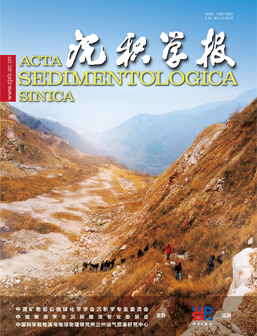Carbon and oxygen isotope characteristics and it’s significance of rock debris in the salt-bearing section of geothermal well in Gaotan Town, Linshui County, Sichuan Province
doi: 10.14027/j.issn.1000-0550.2024.015
- Received Date: 2023-08-28
- Available Online: 2024-03-08
-
Key words:
- Linshui /
- Geothermal well /
- Carbon and oxygen isotopes /
- TSR /
- Surface water
Abstract: Carbon and oxygen isotopes are one of the important geochemical indexes of carbonate rocks, which play an important role in revealing the characteristics of sedimentary and diagenetic fluids, and have become one of the basic means to study carbonate rocks. At present, a large number of studies on carbon and oxygen isotopes in limestone-dolomite stage have been carried out at home and abroad, but there are few studies on carbon and oxygen isotopes in sulfate-carbonate stage. In the sulfate-carbonate stage of the sedimentary sequence, there are still carbon and oxygen elements that can be tested, which makes this study possible. There are currently studies on carbon and oxygen isotopes of the plaster salt section of Huaying Mountain and the plaster bearing strata of Reichenhall Formation, Australia, but these studies are few and concentrated on surface samples. It is of great theoretical significance to study carbon and oxygen isotopes of underground paste and salt samples. In the process of drilling geothermal well in Doubei Village, Gaotan Town, Linshui County, Sichuan, to the east of Huaying Mountain in Sichuan Basin, carbon and oxygen isotopes of paste salt interbedding cuttings of Jialingjiang-Lekoupo Formation were studied. It is concluded that :(1) The δ18OPDB (‰) of paste salt interbedding cuttings in the Daobei geothermal well ranges from -2.56 to -15.47, with an average value of -9.13. The δ13CPDB (‰) ranges from -4.68 to -0.12, with an average value of -2.86, and the Z-value is generally lower than 120, which is inconsistent with the characteristics of Marine sediments. The δ18OPDB and δ13CPDB values were significantly lower than that of the Triassic paste salt formation in Huaying Mountain and the Reichenhall paste salt formation in Australia; (2) The carbon and oxygen isotopes of the underground salt-salt strata in this area are mainly affected by the thermochemical sulfate reduction (TSR) in the deep-buried stage before the formation fold and the massive inflow of surface fresh water after the formation fold, fracture and uplift. The high formation temperature and the exchange of organic carbon before fold and the desalting of surface water after fold and fracture are the fundamental reasons for the low δ18O and δ13C of the gypsum salt layer in this area. At the same time, there may be a little freshwater action and influence during the depositional stage; (3) The formation temperature calculated by Craig'sequation (1965) was 28.18~111.71℃, with an average of 68.45℃. The formation temperature calculated by Vasconcelos'sequation (2005) ranges from 4.54℃ to 78.21℃, with an average value of 38.91℃. The former is close to the present temperature of the formation, while the latter is lower, which may be related to the selection of δ18O in the calculation formula.
| Citation: | Carbon and oxygen isotope characteristics and it’s significance of rock debris in the salt-bearing section of geothermal well in Gaotan Town, Linshui County, Sichuan Province[J]. Acta Sedimentologica Sinica. doi: 10.14027/j.issn.1000-0550.2024.015 |






 DownLoad:
DownLoad: